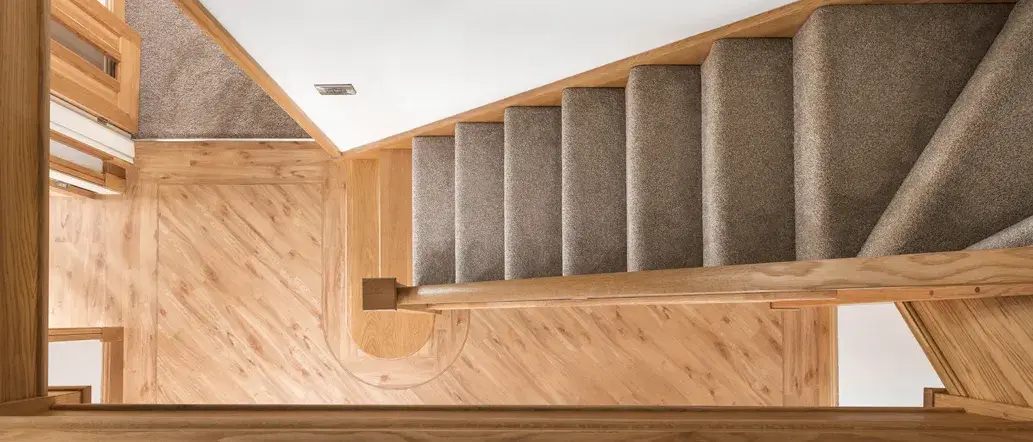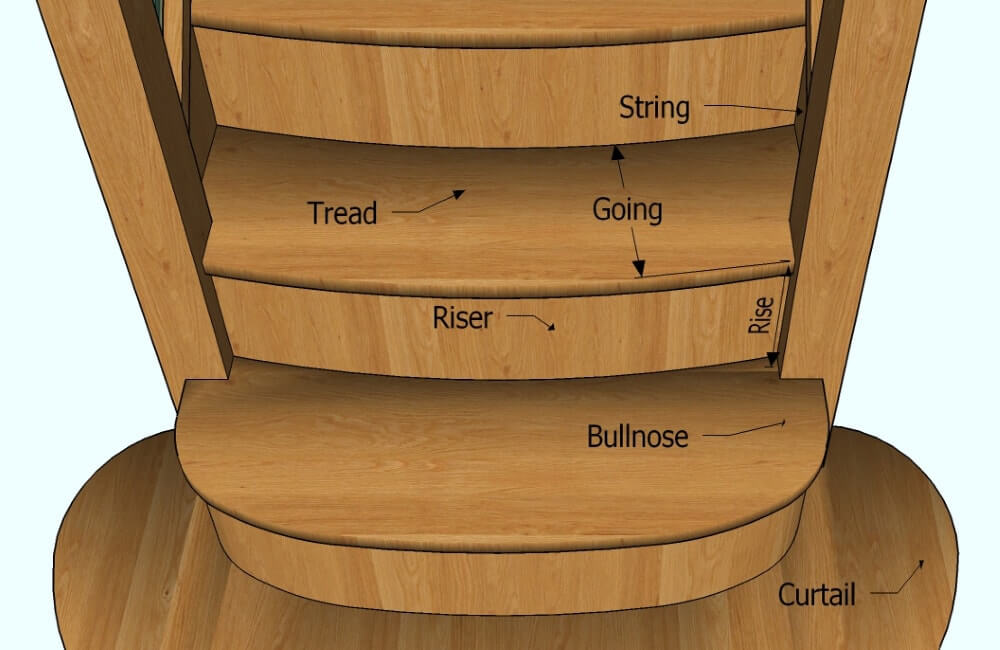String
This is the vertical, structural element that runs perpendicular to, and houses, the treads and risers. This can be shaped to follow the ‘sawtooth’ of the treads and risers to create what is known as a cut string.
Tread
The part of the stairway that you step on. You would normally also have a nosing on this that slightly overlaps the riser.
Going
The individual going is the term for the measurement from face of riser to face of riser.
Riser
The vertical portion between each tread. When this is missing it is called an open plan staircase.
Rise
An individual rise is the vertical measurement from top of tread to top of tread. Your total rise is measured from finished floor to finished floor.
Bullnose
A feature tread which curves 90 degrees and returns into the front face of the newel post. These can be curved on one or two sides and combined with a curtail tread. Ideal if you’re tight on space as the newel post is moved back to the second riser.
Curtail
A feature tread which sweeps out beyond the width of the flight, curving 180 degrees and returning into side face of the newel post. These can be curved on one or two sides and combined with a bullnose tread.






